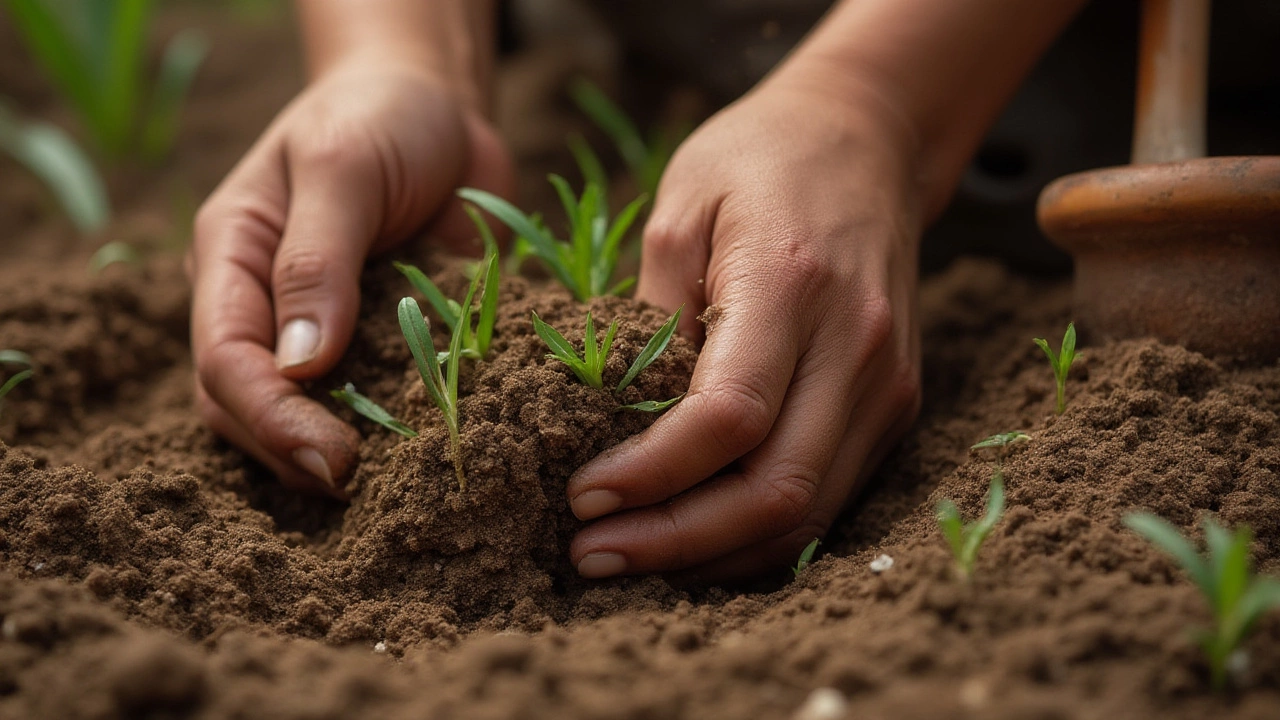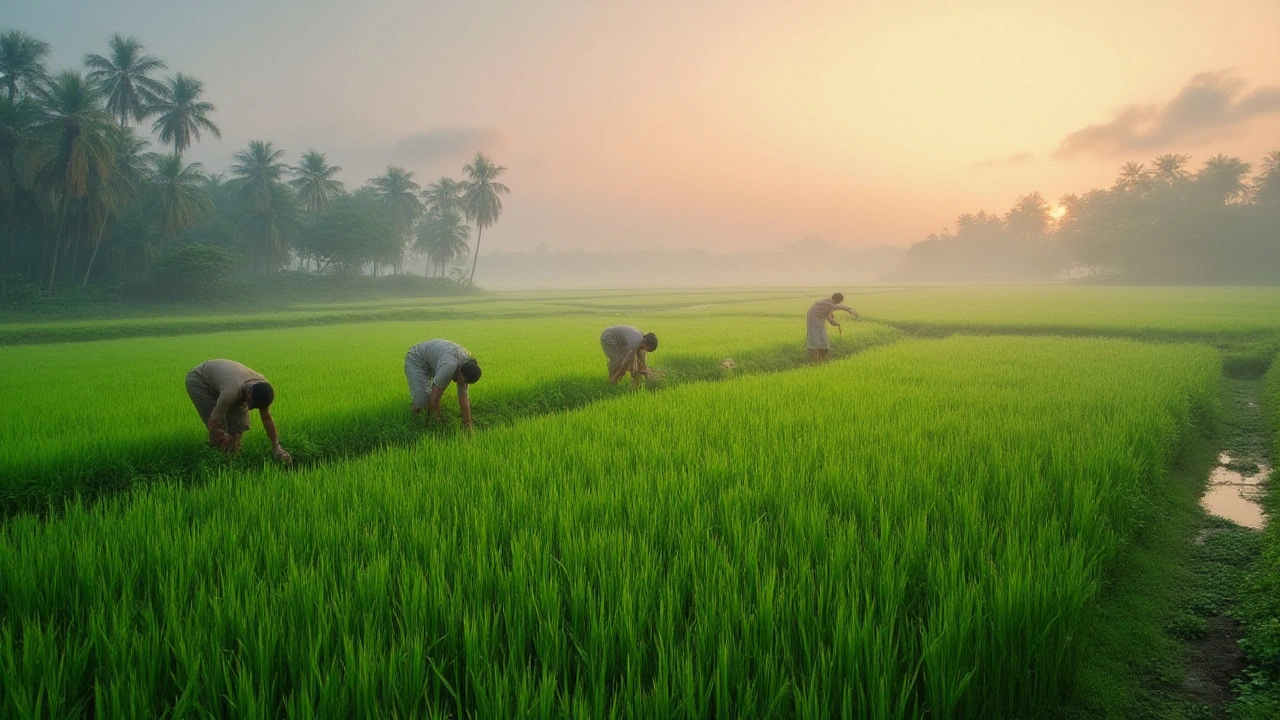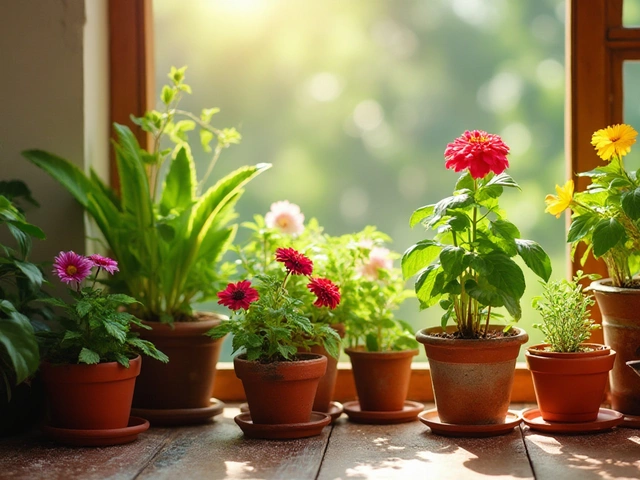The world grows nearly half its food calories on a tiny handful of crops, and rice sits firmly at the top of that list for billions of people. So, here’s something that might surprise you: rice isn’t fussy about climate. It happily grows everywhere from soggy delta lowlands in Vietnam to terraced hills in Bali. But if you get the soil wrong? Good luck getting more than a stunted harvest, let alone those lush, shimmering paddies you see in documentaries or maybe—if you’re as lucky as I am—on a holiday to South Island rice trials. Here in Auckland, nobody imagines you can grow rice in your backyard, but Liana and I laughed as we watched a guy do exactly that with just a couple of square meters, a children’s pool, and, you guessed it, the best soil for rice. The right dirt changes everything.
What Kind of Soil Makes Rice Happy?
Let’s clear up a myth: rice isn’t a water plant by birth. But, centuries ago, farmers figured out that if you grow rice in flooded fields, weeds can’t compete. That’s why, throughout Asia, you see vast paddies—flat, muddy, shimmering under the hot sun—designed to hold water and keep rice cozy. So, what’s the best kind of soil for this wet-and-dry lifestyle? Heavy clay or clay loams top the list. These soils have tiny particles that squish together and hang on to water, which helps keep the paddies flooded with minimal effort.
A good rice soil does two main jobs. First, it holds water well—no easy trick, since light sandy soils just let your ponded water vanish fast, dragging nutrients with it. Second, it must offer plenty of nutrients for growing strong roots and those golden panicles that feed half the world. A loamy soil (a mix between sand, silt, and clay) isn’t bad, as long as it has enough clay to act like a sponge.
Dead flat fields aren’t just for style points, either. If the field isn’t level, the water runs to one end, leaving other spots dry and sad. Some of the world’s best rice yields come from Japan, China, and India—where fields are laser-leveled to be perfectly even. Take a look at this recent stat: according to the International Rice Research Institute, the average clay content for high-yielding rice soils is 30-50%. Silt matters too; it helps store minerals, but too much makes it sticky and tough for roots. Sand—well, imagine trying to dam a river with sandcastles. That’s about how effective it is to flood sandy soil for rice.
One fact that shocked Liana when we experimented with a mini rice patch: rice roots love a bit of mud, but they don’t do well if the soil’s always starved of oxygen. Floodwater solves this by layering. The top bit of soil stays slightly oxygenated, while the lower layers preserve nutrients like iron, manganese, and phosphorus. This keeps those nutrients from flushing away, a trick only rich, heavy soils can pull off.
Check out this breakdown of rice soil types and their water-holding capacity—a handy cheat sheet for your own experiment, whether you’re in your backyard or planning a hectare:
| Soil Type | Texture | Water Holding Capacity | Drainage |
|---|---|---|---|
| Clay | Fine-textured, sticky | High | Poor |
| Clay Loam | Medium-fine, smooth | Moderate-High | Slow |
| Silty Clay | Silky-smooth, firm | Very High | Very Slow |
| Loam | Medium, crumbly | Moderate | Good |
| Sandy Loam | Gritty, loose | Low | Rapid |
Lowland paddies need soils that hold onto flooded water, often just a few centimeters below the surface, for weeks at a time. The classic muck we see in iconic images of Myanmar or the Pampas of Argentina is usually a silty clay loam, rich and chocolatey, great for sticking to bare feet (or boots, depending on your style).
There are oddball varieties too—salty soils near coastal zones or acid sulfate soils. But don’t try these at home unless you love a good challenge. You’re better off with a backyard patch made of heavy loam, with a barrier layer (think thick clay at the bottom or even a pond liner) to keep water from sneaking away on you.

Soil Chemistry and Nutrients: What Rice Really Wants
Rice is a hungry crop. It likes its food served buffet-style and isn’t shy to throw a tantrum if something’s off. The best soils for rice aren’t just about sticking water in place—they've got to deliver a five-star nutrient spread, too. Most rice fields work best with a slightly acidic to neutral pH, sweet spot between 5.5 and 7.0. If you go sourer than that, certain nutrients go into hiding. Too alkaline? Iron lockout gives your rice a sickly yellow look.
Flooded soils have a neat trick up their sleeve: as soon as you flood them, some elements that are normally hard to find—iron and manganese, for starters—suddenly become available to rice. That means, done right, your crop grows deep green leaves and fills out fat grains. But if the soil’s too poor or thin, even flooding won't save you—you’ll just end up with yellow, sad plants that bolt straight to seed.
You can tell a lot about a rice soil by how it smells when wet. Good paddy soil has a faintly earthy, sweet scent, thanks to all that organic matter. If it reeks like rotten eggs, you may have too much stagnant water, which can rot roots and foul up the process. This is especially true in old paddy fields—look for soils that move from heavy and soggy to sweet-smelling and crumbly as you dry them for harvest.
Nitrogen, phosphorus, and potassium are the main players, but don’t forget those micronutrients. Grain-size and yield will tank if you’re missing zinc or sulfur. In fact, in the tropical paddies of Southeast Asia, zinc deficiency is one of the top things that cripples a first-time crop. Adding a handful of compost, poultry manure, or slow-release organic fert helps keep things in check, making the most of whatever microclimate you’ve got. If you want to avoid a chemical hangover, try green manures or cover crops like mung bean or clover—both fix nitrogen and tilt the soil fertility in your favor for next season.
When Liana and I did a little rice science at home, we discovered a fun trick: adding duckweed to our water containers basically jumpstarted the soil life. It pulled nitrogen out and held it in reserve for the rice. It also seemed to keep the summer mosquitoes away! If you visit South China or Vietnam, you’ll see farmers actively tossing handfuls of water ferns and duckweed into their paddies for just this reason.
Ever worry your water is too salty for rice? Salt tolerance varies by rice type, but too much salt (over 4 dS/m, if you’re measuring) turns paddies white and crispy. Some newer varieties cope, but if you’re running an experiment at home, stick to rainwater or fresh, clean tap water and flush the soil regularly if you have to reuse it.
For those who geek out on numbers, here’s a quick table with ideal nutrient values for rice soils—use it to guide your soil testing before the planting frenzy hits:
| Nutrient | Ideal Range (mg/kg soil) | Note |
|---|---|---|
| Nitrogen (N) | 50-100 | Supports lush leaf growth |
| Phosphorus (P) | 15-35 | Crucial for strong roots |
| Potassium (K) | 60-120 | Improves grain filling |
| Zinc (Zn) | 1.5-3.0 | Ward off stunted growth |
| pH | 5.5-7.0 | Sweet spot for nutrient uptake |
To sum it up: heavy, nutrient-rich, slightly acidic soil is your golden ticket. And if the pH or nutrition needs a boost? Just a dash of lime or a sprinkle of compost can fix things fast. Even in a tiny patch, with the right mix, you get tall green stalks and, eventually, an honest rice harvest in your own little slice of Auckland (or wherever your backyard may be).

Adapting Soil and Rice Systems for Local Conditions
If your idea of dirt is red volcanic earth, black peat, or gravelly silt, don’t give up on rice yet. There’s a rice-grown-for-everywhere approach out there, and soil can be tweaked more than you’d think. In fact, about 30% of the world’s rice is grown without the classic clay-paddy setup, in what’s called “upland” or “dryland” rice systems. In India, for example, you’ll see plots carved into hills or even grown right in open, rain-fed fields. The trick? Making every drop count and picking the right rice for the job.
First off, if you have sandy or fast-draining soil, don’t waste water trying to keep it flooded—it’ll just leak away. Instead, work up the soil with compost, manure, or even a layer of pond mud scraped from a friend’s water feature. Some Auckland growers create their own micro-paddies by digging shallow basins, lining them with a sheet of clay or a cheap plastic liner, and dropping in heavy loam from a local supplier (or compost-mixed soil if you have it). Low budget, but effective. Japanese home gardeners often use stacked planters, with plugs for drainage, so the bottom layer stays wet while the top allows roots to breathe—a perfect hack for a small urban yard.
Even with heavy clay, a single mistake can wreck a crop. If your field or paddy patch dries out and cracks, root health plummets. Cracked earth flushes away minerals with every rain. To stop this, mulch heavily around the plants with straw or lawn clippings. This keeps the top soil moist and protects it from baking under summer sun. Here, flood management apps—yes, seriously, people use smartphone apps to control paddy water—track scheduled drainage, flooding, and even fertilizer timing. If it helps squeeze out a 10% better yield, it’s worth a look. Around 45% of rice farmers in the Mekong Delta use tech for just this reason.
Worried about pests? Heavy soils aren’t just a water thing—they form a barrier that deters burrowing insects, nematodes, and even larger pests. But if you get repeated problems, rotate your rice patch with a legume crop for a few months to reset soil health and restore its natural defenses. Some folks add ducks to their wet paddies—the birds gobble up insects, aerate the soil, and drop (nutritious) gifts along the way. In Japan, this method is called Aigamo, and the farmers swear it boosts yield and taste.
Soil adaption is also about tradition. If you come from a family that’s grown rice in buckets, jars, or makeshift terraces, you’ll know there are a million ways to tweak the ground to suit your needs. Just keep the basics in mind: sticky soil, rich food, and water management. Even trickier soils (volcanic ash, say, north of Auckland or on the slopes of Mt. Taranaki) can support a decent rice harvest if you blend in enough compost and keep the nutrients topped up. The secret, really, is watching the plants. A pale, stressed rice shoot tells you it’s time to tweak. A deep green shoot, bold and upright, says you’ve nailed it.
Sometimes, the path to the best rice soils starts as an experiment. Try a small trial bed. Add and record what you learn—how long the patch stays flooded, if you see worms or frogs move in (that’s a good sign), or if the soil smells sweet after a few days under water. Kids love helping with this, and nothing beats their pride when you serve homegrown rice for dinner, even if it’s just a single bowl.
With a little trial and error, and maybe a field trip or two to see how others do it, you can build up that perfect rice paddy soil anywhere. Even in Auckland, where Liana rolled her eyes at my muddy shoes but cheered when the first green shoots poked through the muck. The secret isn’t magic—it’s just understanding what your rice wants and giving it a rich, wet, sticky home to thrive in. If that means hauling a few buckets of clay or stirring up compost after work, trust me, the harvest will feel absolutely worth it.





